fall inside a hole
R-01 Straight Rail
| R-02 Half Straight Rail --> |
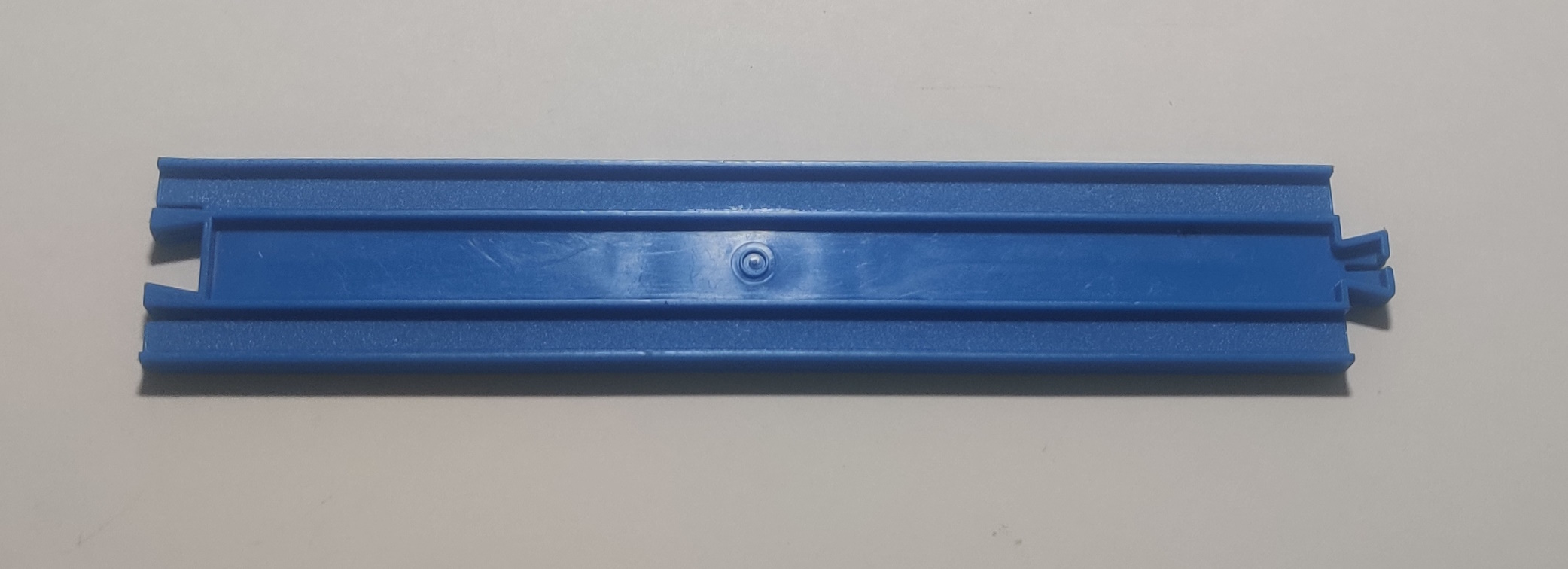
The humble straight rail (ちょくせんレール or 直線レール) is one of the cornerstone pieces of Plarail and its track system. Straight rails were sold individually in packs of four from the earliest days of individual Plastic Rail accessories. Throughout the 80s and 90s the four pack cost 300 yen. They were given the designation 1 under the 1970s numbering scheme and R-01 under the 1987 numbering scheme. The official length of a straight rail (as well as the radius of standard curve rails) is 216mm, but some Plarailers use 214mm instead. With age many types of rail seem to shrink and measure within a range of lengths. The play in the track joints and plastic itself will generally account for any issues that the exact length of any particular rail may pose.
Smooth rails (1959-1974)


The earliest design of straight rail dates back to the very beginning of Plastic Rail and is completely smooth with no tread or roughness to the rails and no country of manufacture markings. There are circular molding marks on the "bottom" of these rails from where ejection pins in he molding machine push the rails out of the metal tooling after they have been filled with plastic and cooled. These rails were in use throughout the 1960s. They measure around 213mm long and are rougher moldings than later rails with obvious molding lines along the sides of rails. The plastic mix is harder (or has hardened over time) and most examples seem to have shrunk or expanded unevenly over time. Rails do not always fit together well or evenly. These completely unmarked rails were used in sets at least as late as 1968, as two are used in the 1968 Hikarigo No.1 Set.
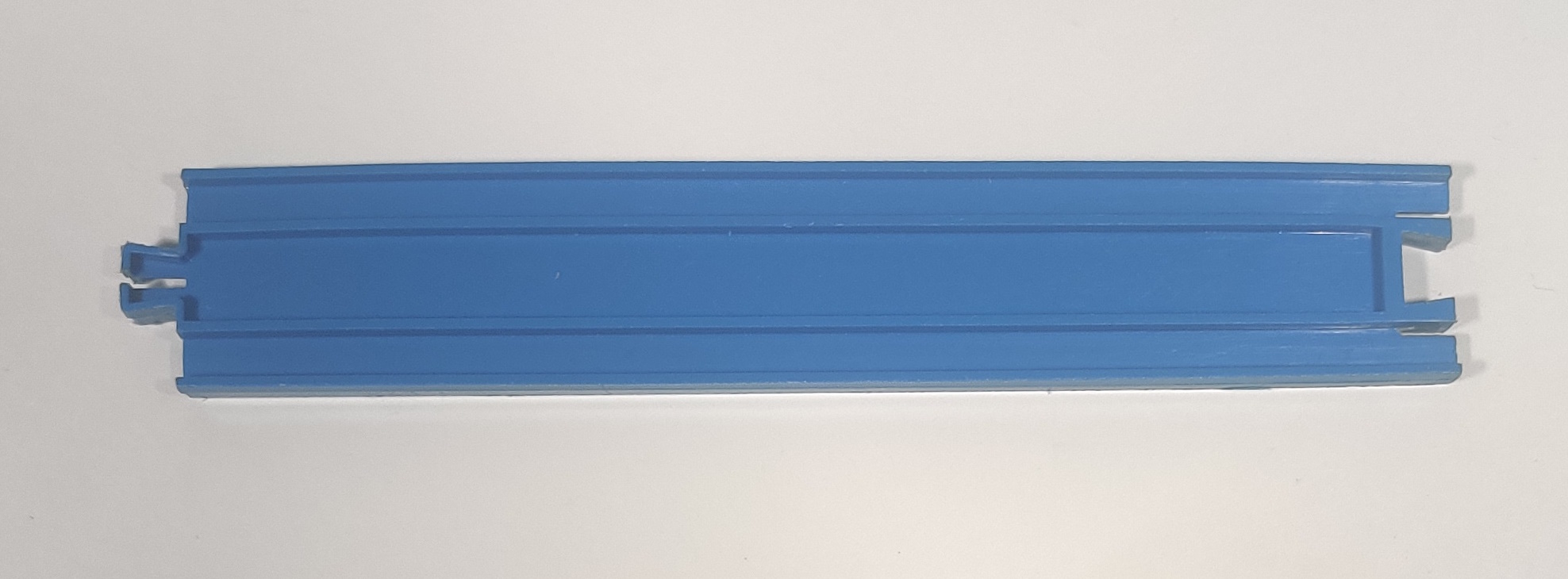
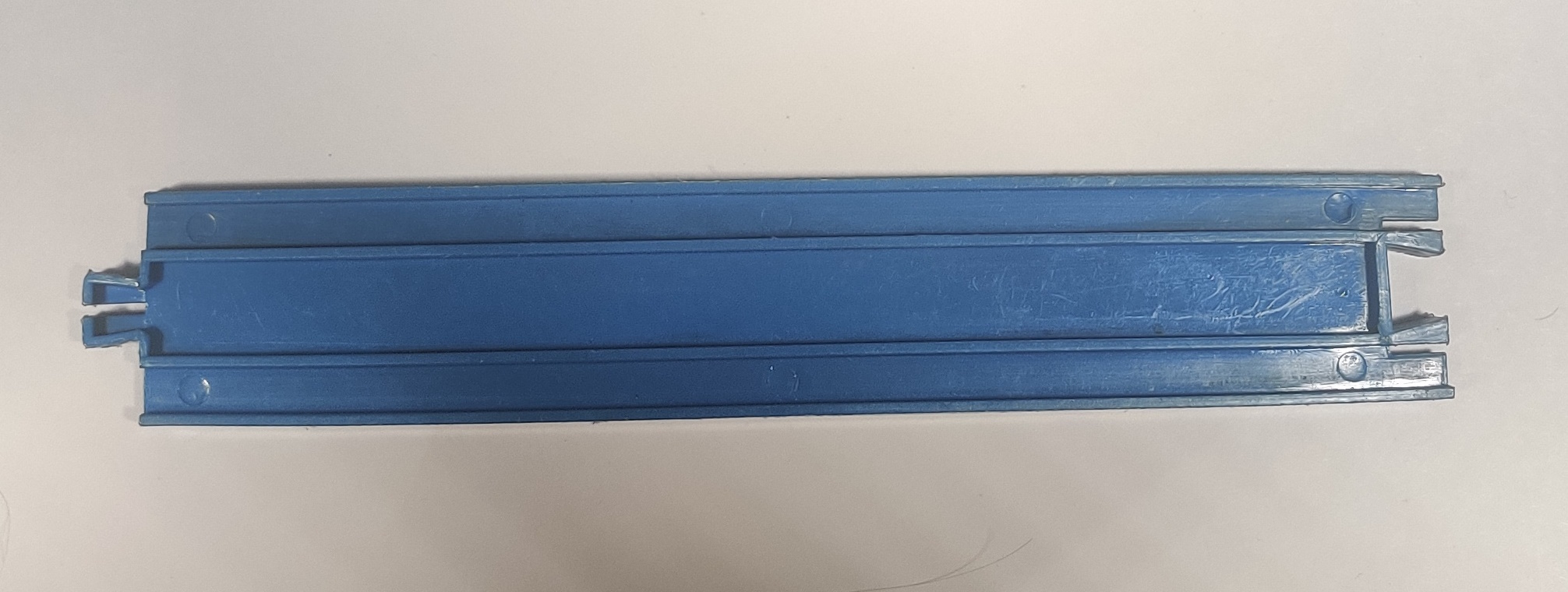
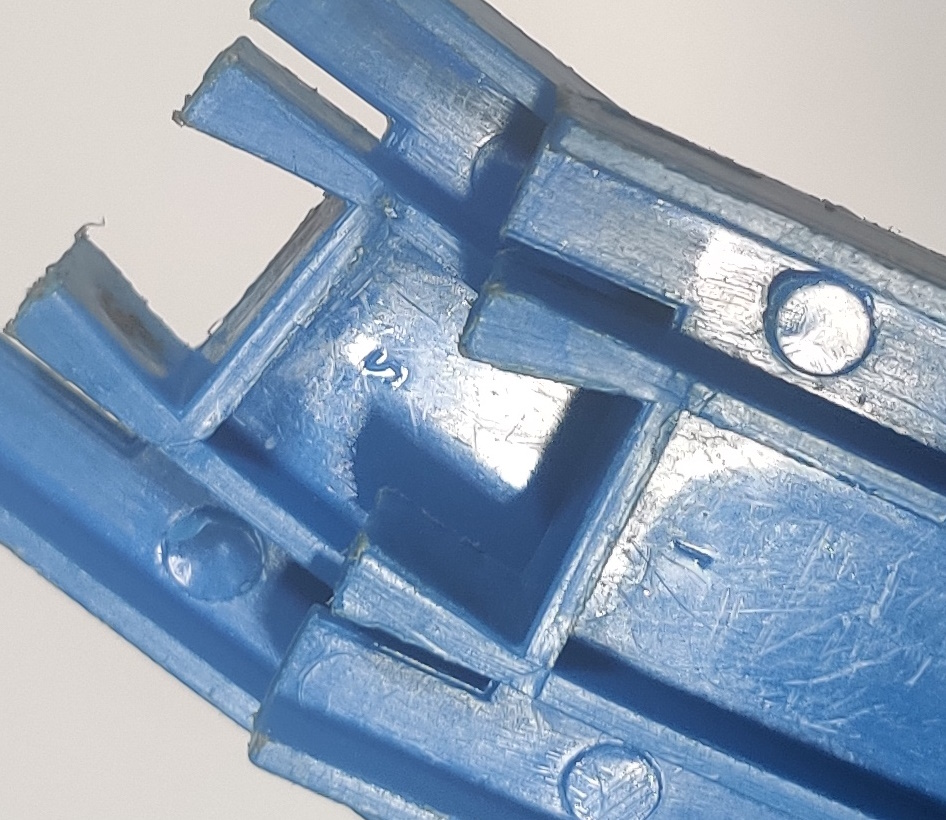
One later variation of the smooth curve rail has small mirrored numbers marked near the inboard connector. The marks appear mirrored in the rail but would have looked correct on the mold itself. The different numbers allow rails that fail quality control to be traced back to a specific "slot" in a larger mold that can make multiple rails at one time. Many Plarail pieces contain molding marks like these.
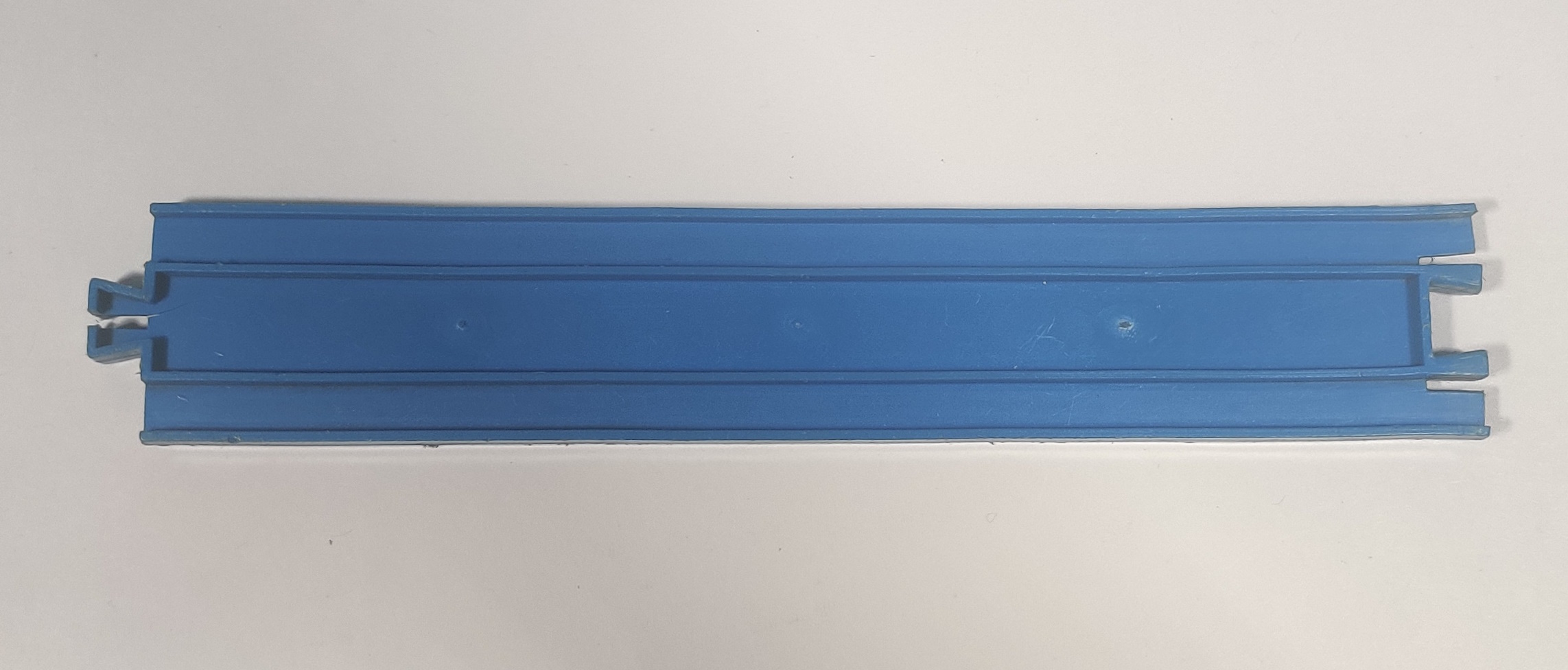
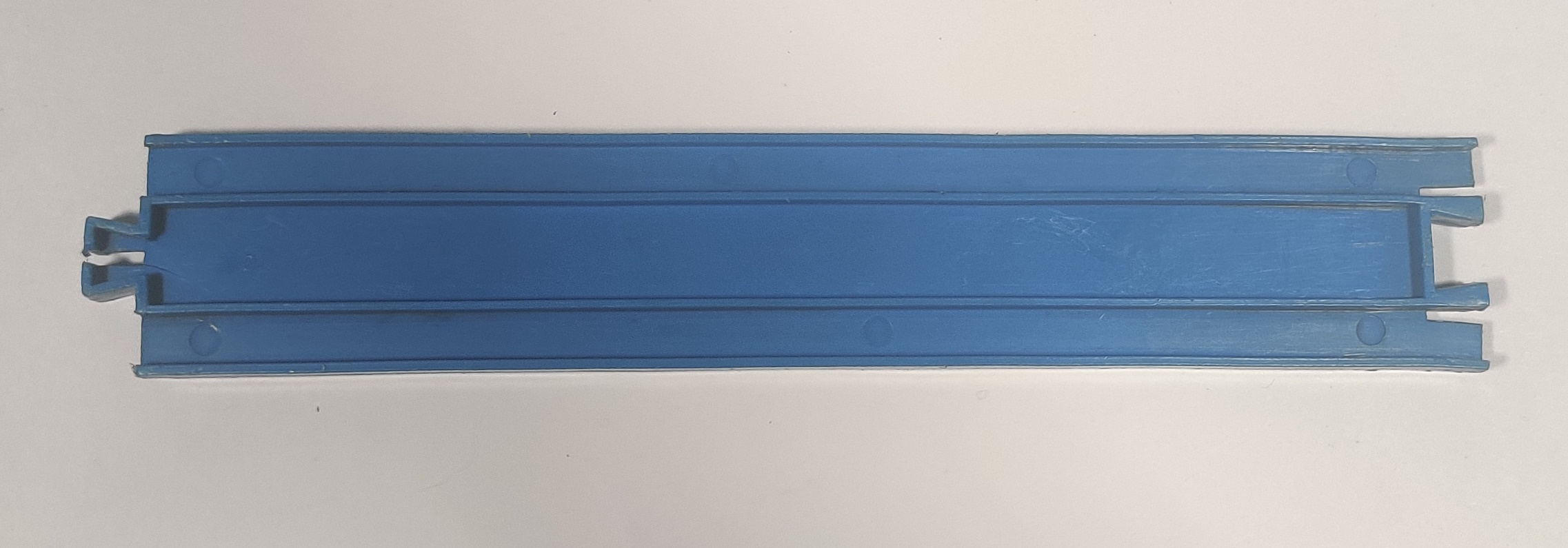
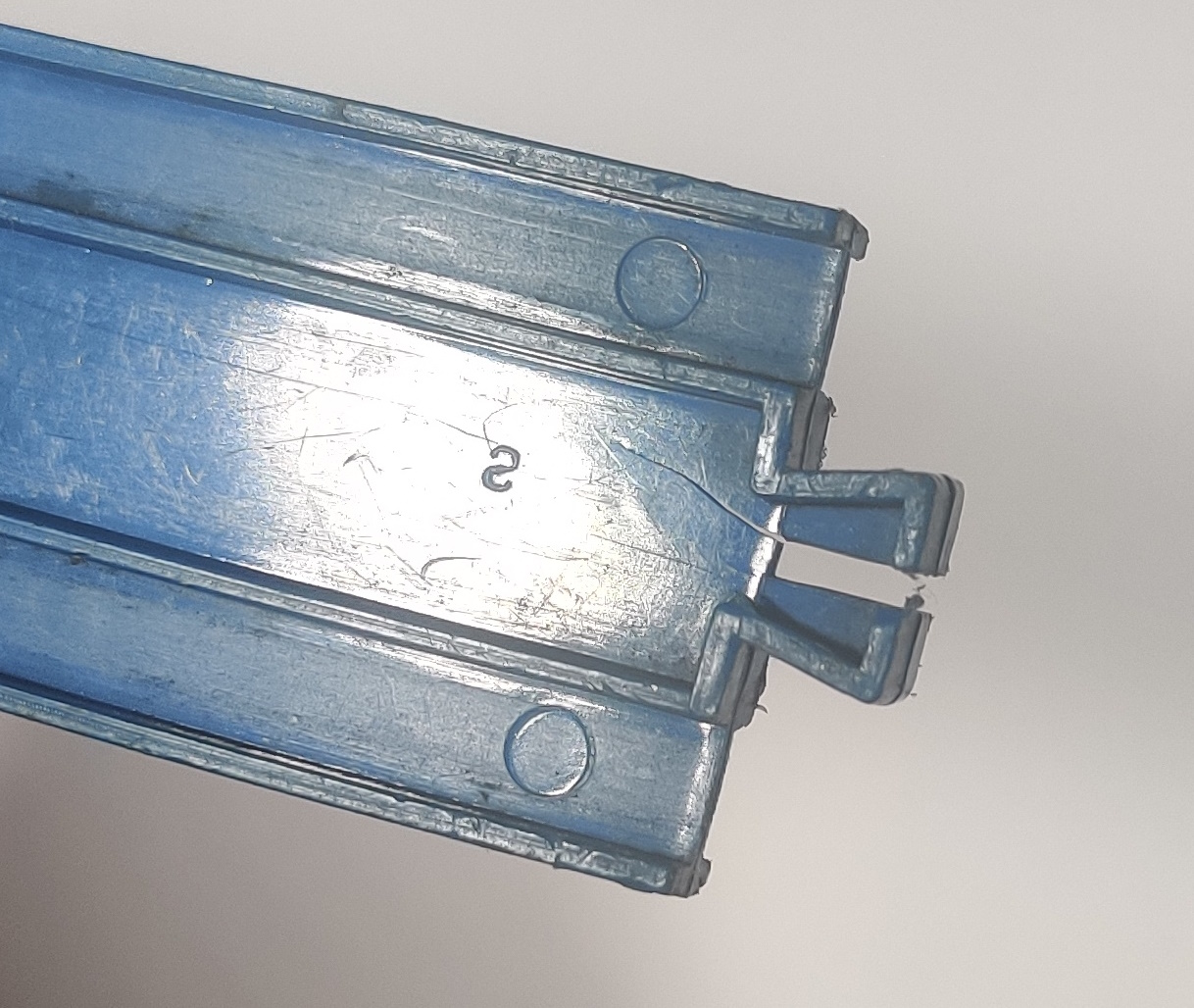
I have only found this one example of a completely smooth rail with a letter near the output connector. Unlike other rails which have three pairs of circular molding marks at even intervals, the two circles on this rail are offset to either side of the center of the rail. This rail measures in at 212mm and has a split output connector.


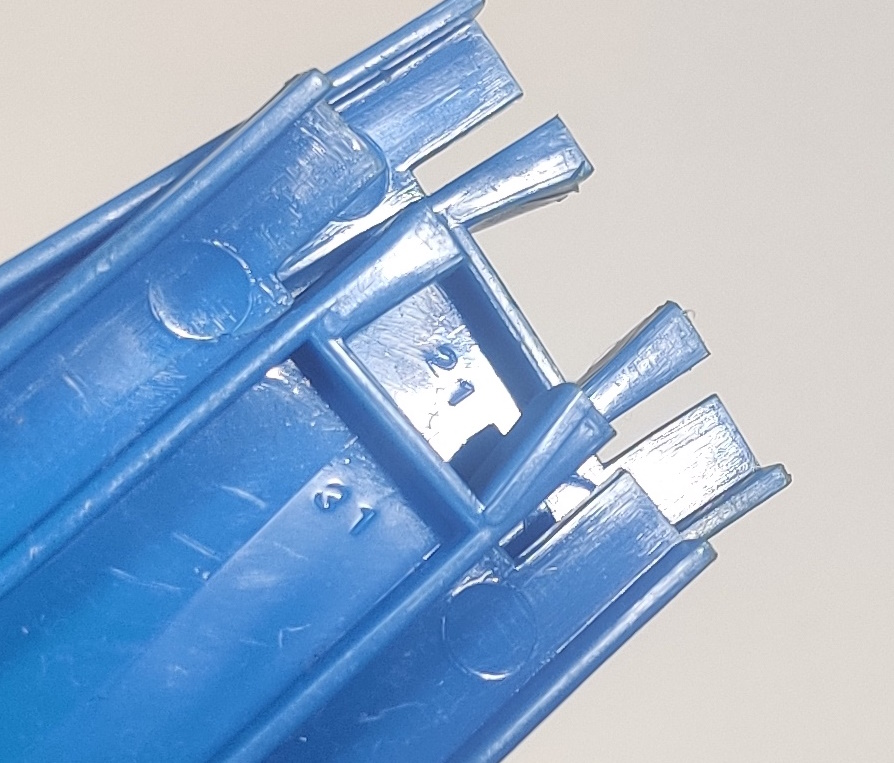
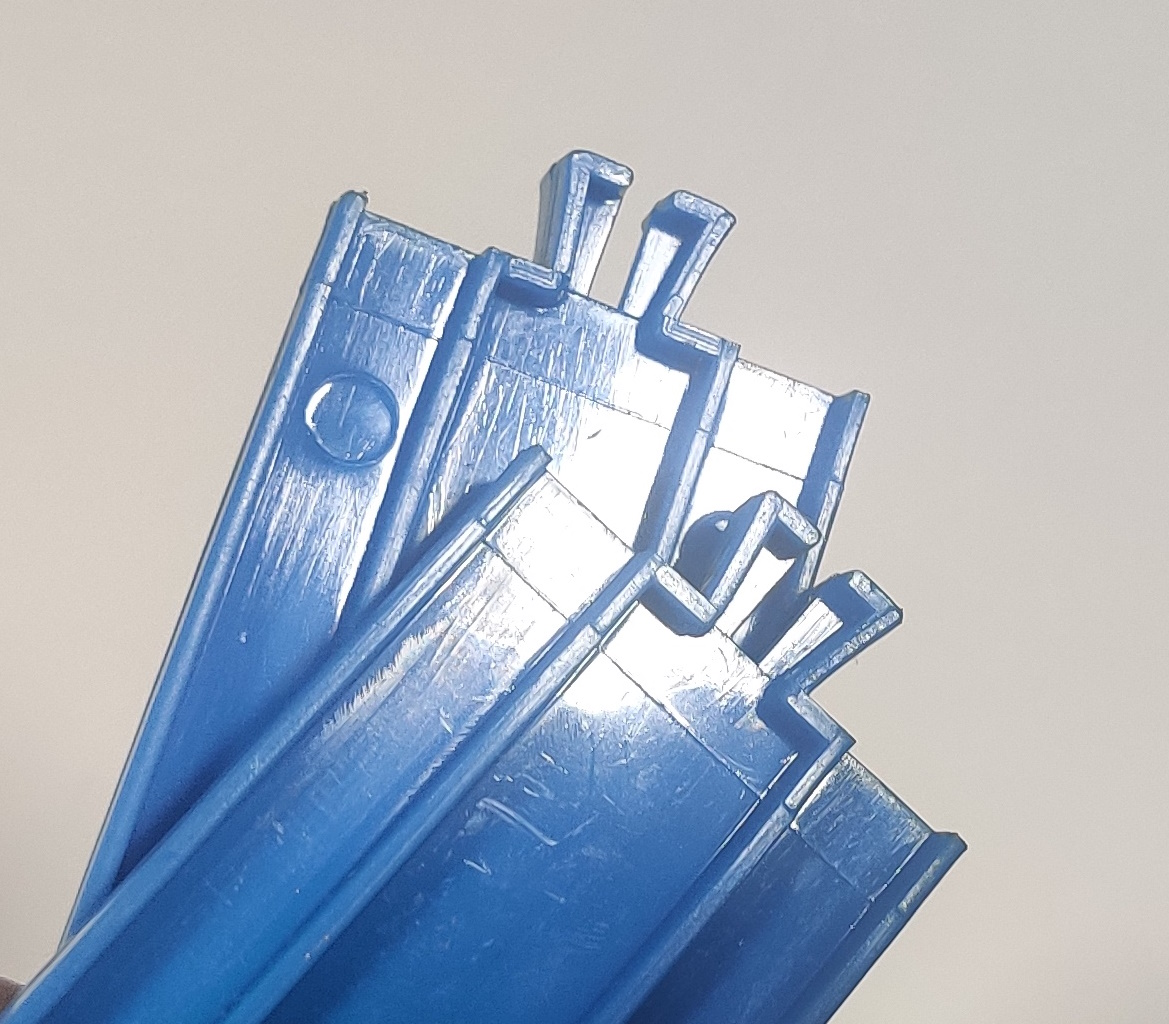
Another smooth straight rail variant has two molding pips on the top and high numbers near the inboard connector. It is possible that these rails were from a secondary set of track molds that had their molding marks suffixed with 1s to differentiate them easily from the other set of molds. It is hard to know the exact order some of these rails appeared in without finding boxed sets that have not had their rails mixed up over 50 years. This version of the rail measured around 214mm and oddly seems to show signs of being made from a previous mold that was modified to be a different length, with the seam up near the output connector.
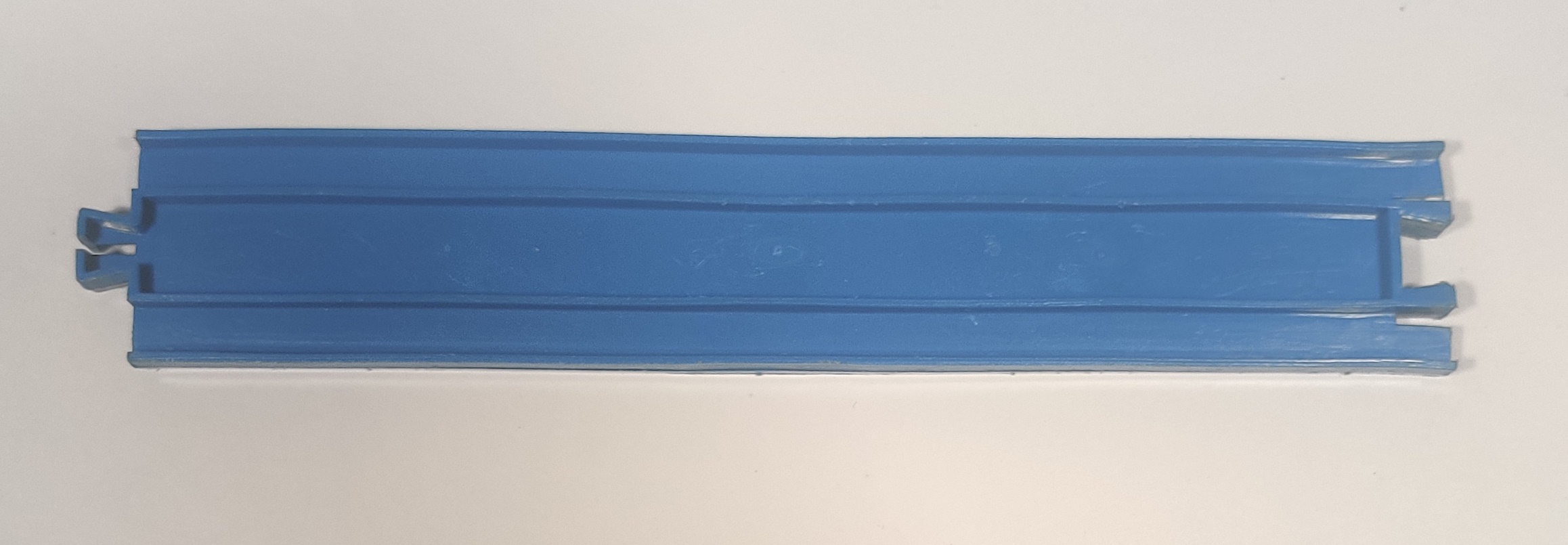

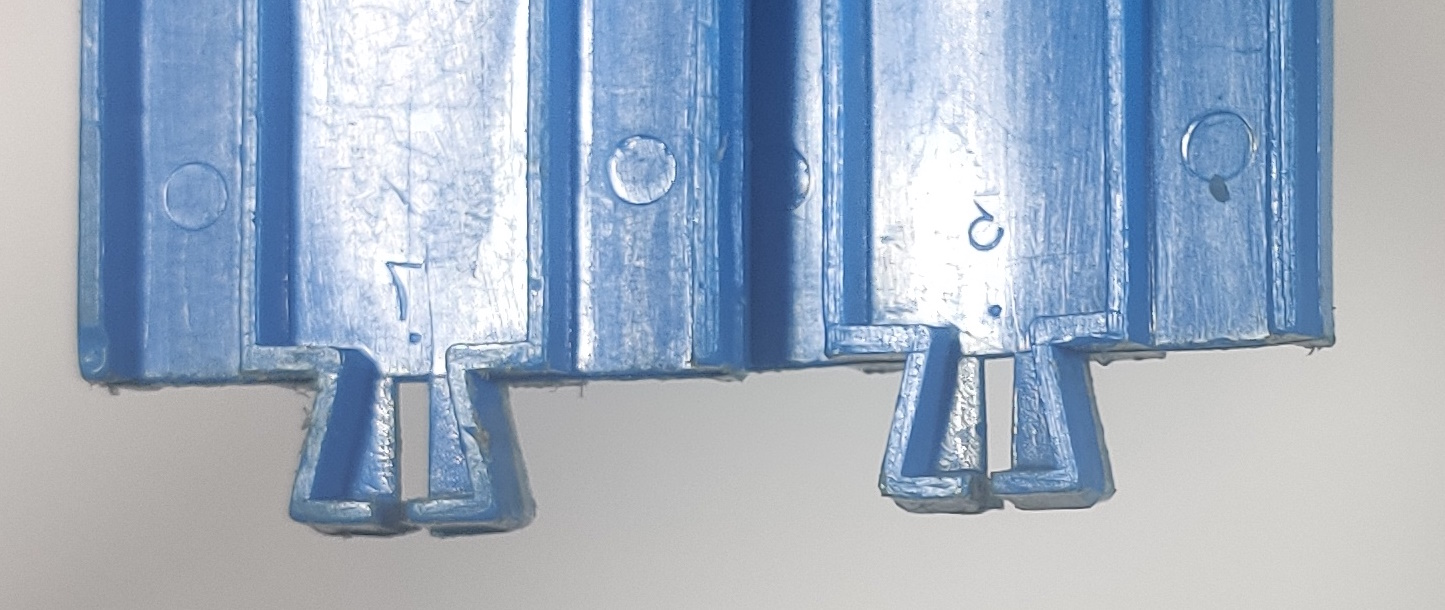
Another smooth variant has reversed molding numbers near the outboard connector and three molding pips on the top. These rails measure in around 210mm.

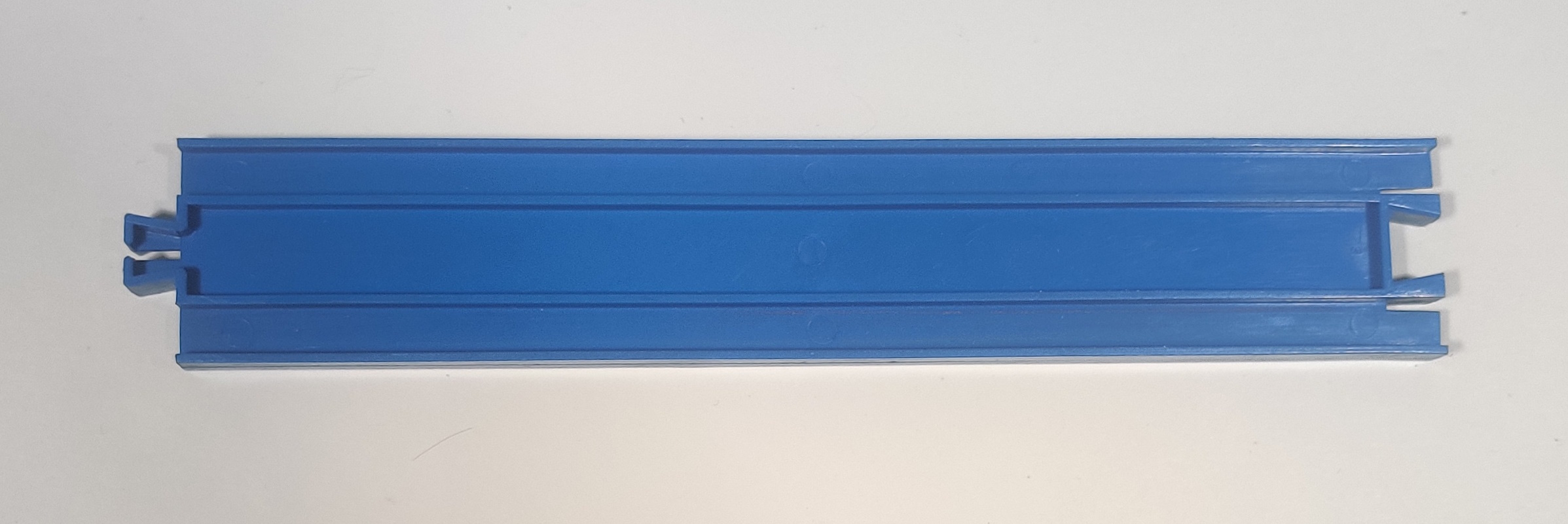
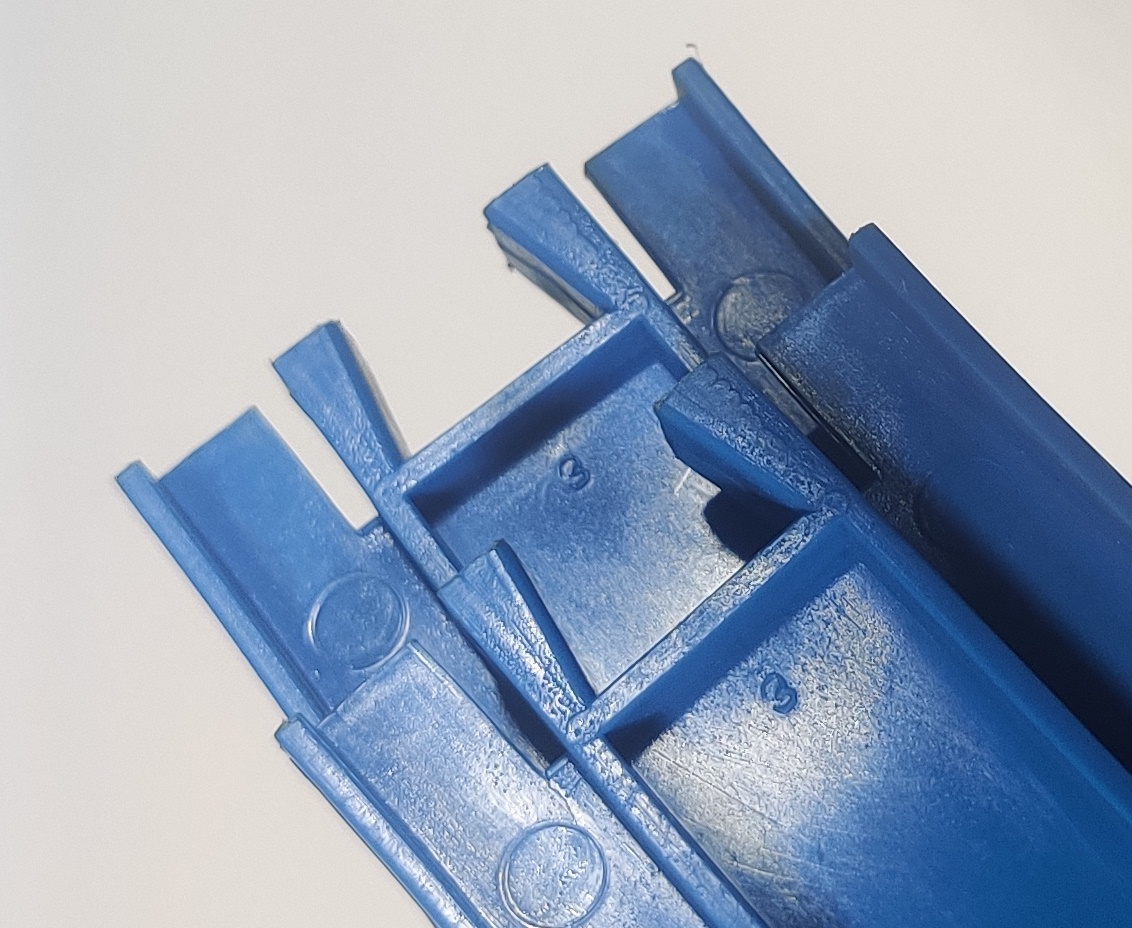
This late smooth-era design used a small plastic ring around the central molding pip, a design that would be seen on various rails for decades after. These rails have smaller (and lower) numbered marks near their inboard connectors.
Roughtop rails (1974-1987, later 90s)
Around 1974 rails transitioned to "roughtop" rails to increase traction of locomotives.
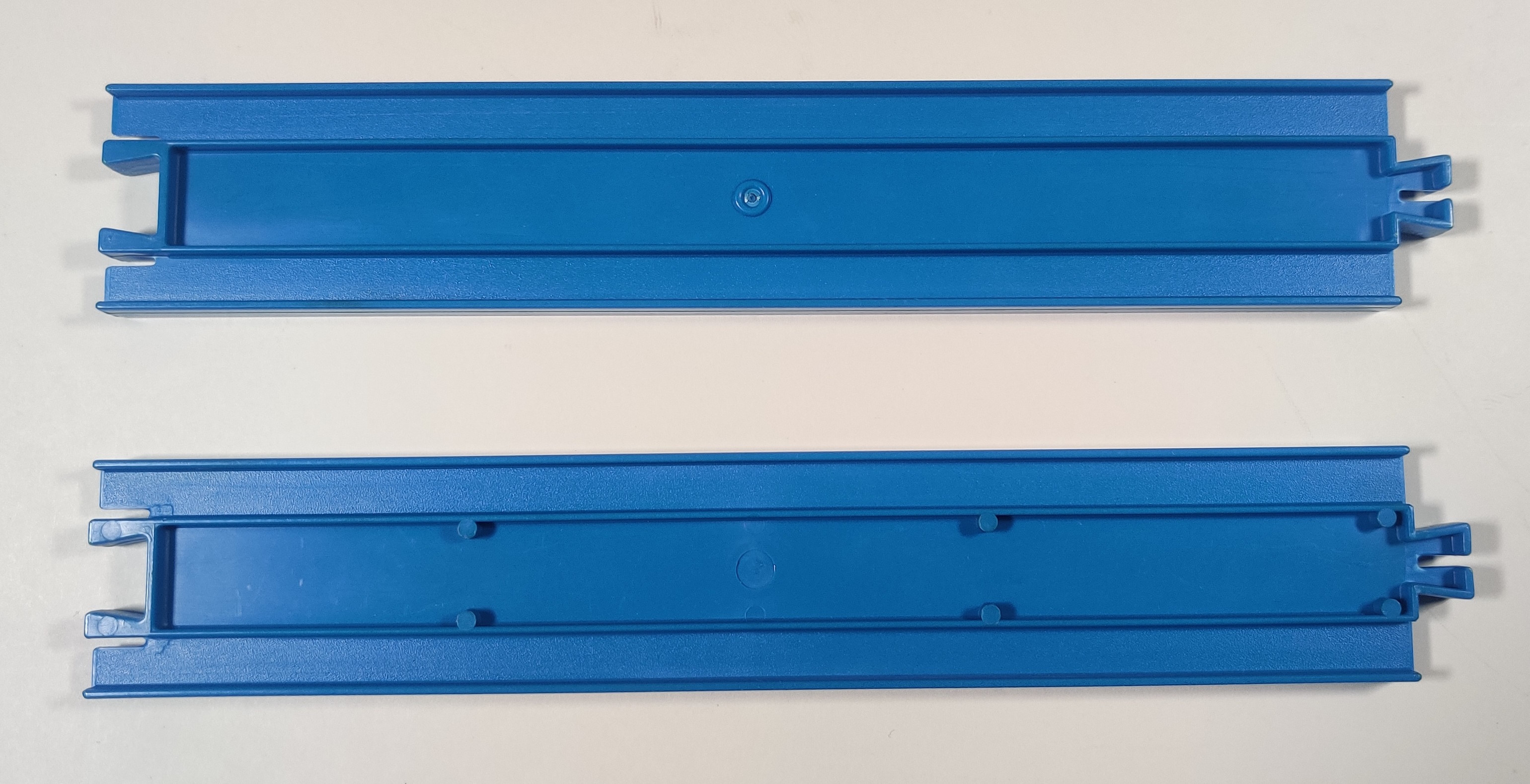
Circa 1975 a small number of straight rails were produced in a harder plastic mix in the United States for the Playrail Chug-A-Log Choo Choo. Along with the curve rails in the set this is the only time that Tomy manufactured Plarail rail in the USA.

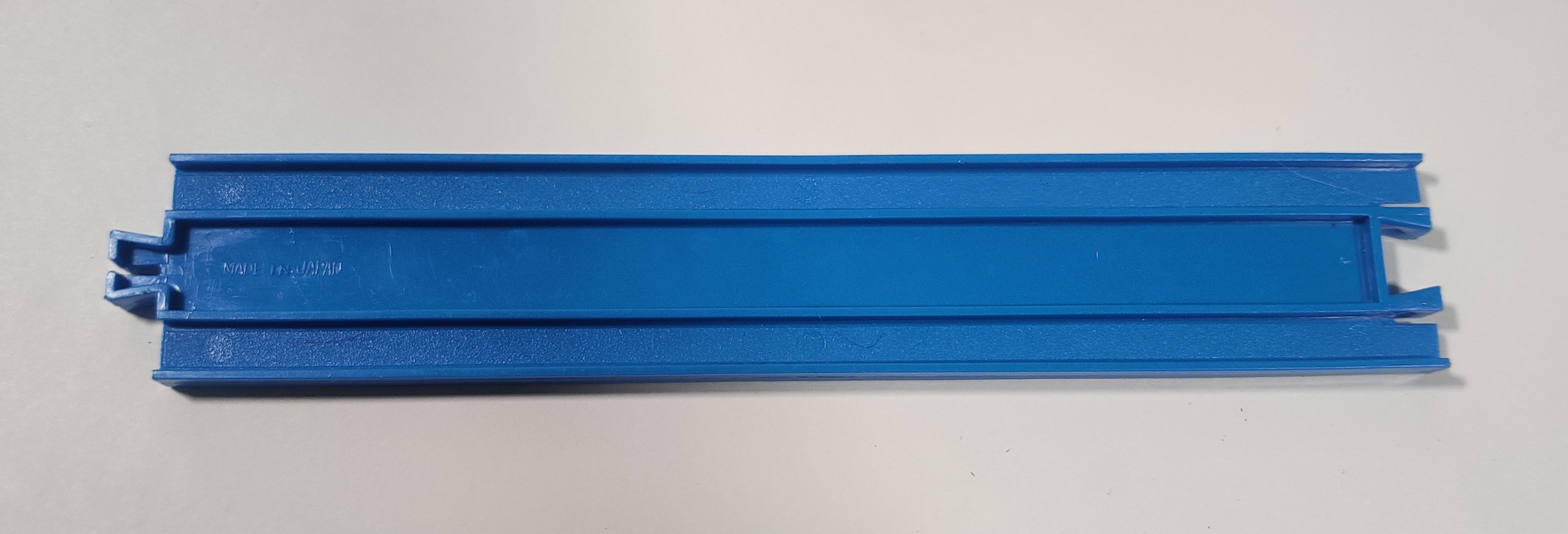
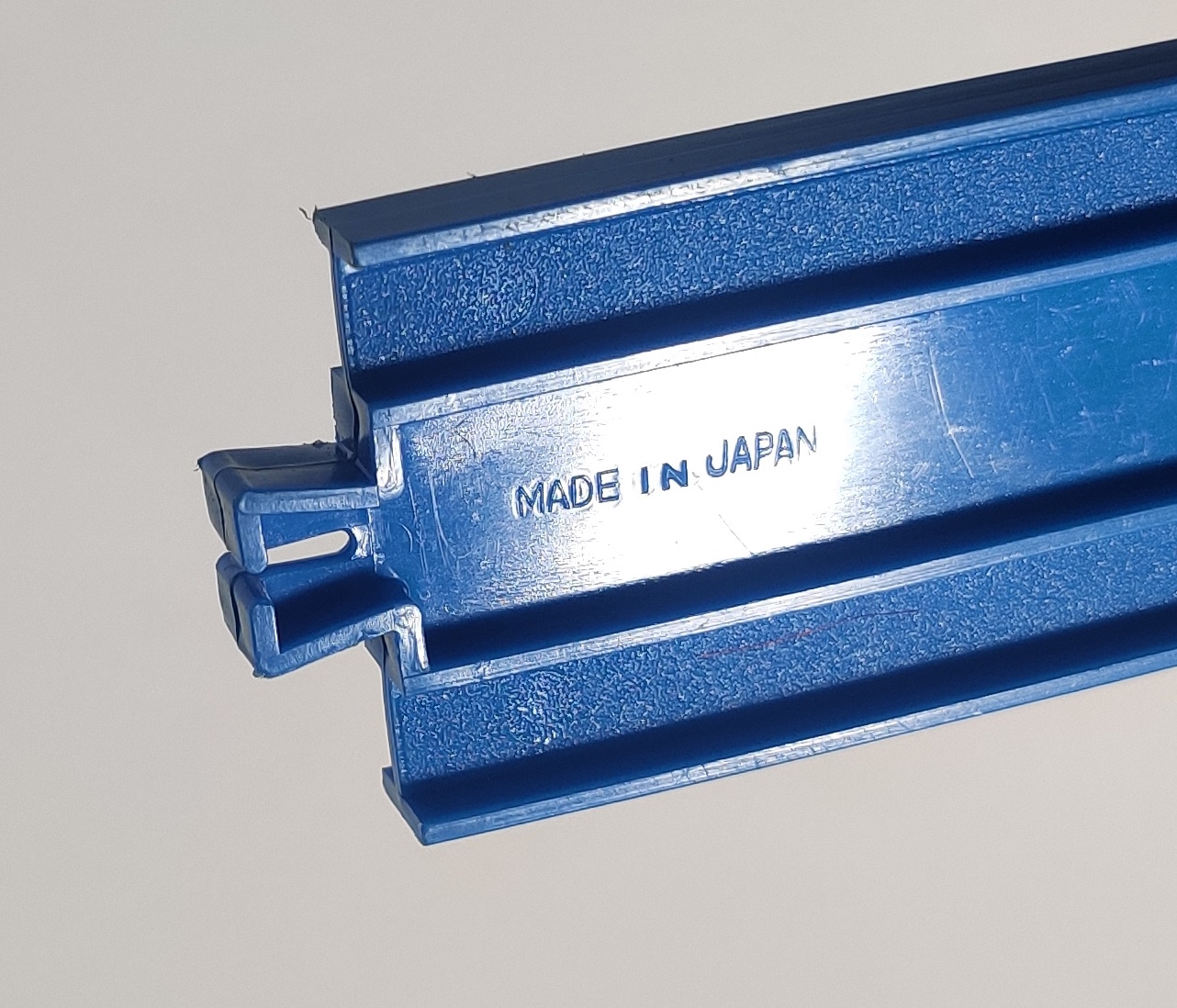
These rails circa 1977 have a "rough" made in Japan stamp that is somewhat uneven with a ring around the pip. A small molding number is located near the input connector and the bottom of the rails have rounded support protrusions. Like many other old rails, these rails can shrink and split over time. The split in the outboard connector is the newer rounded one. This rail was used at least up to 1982.


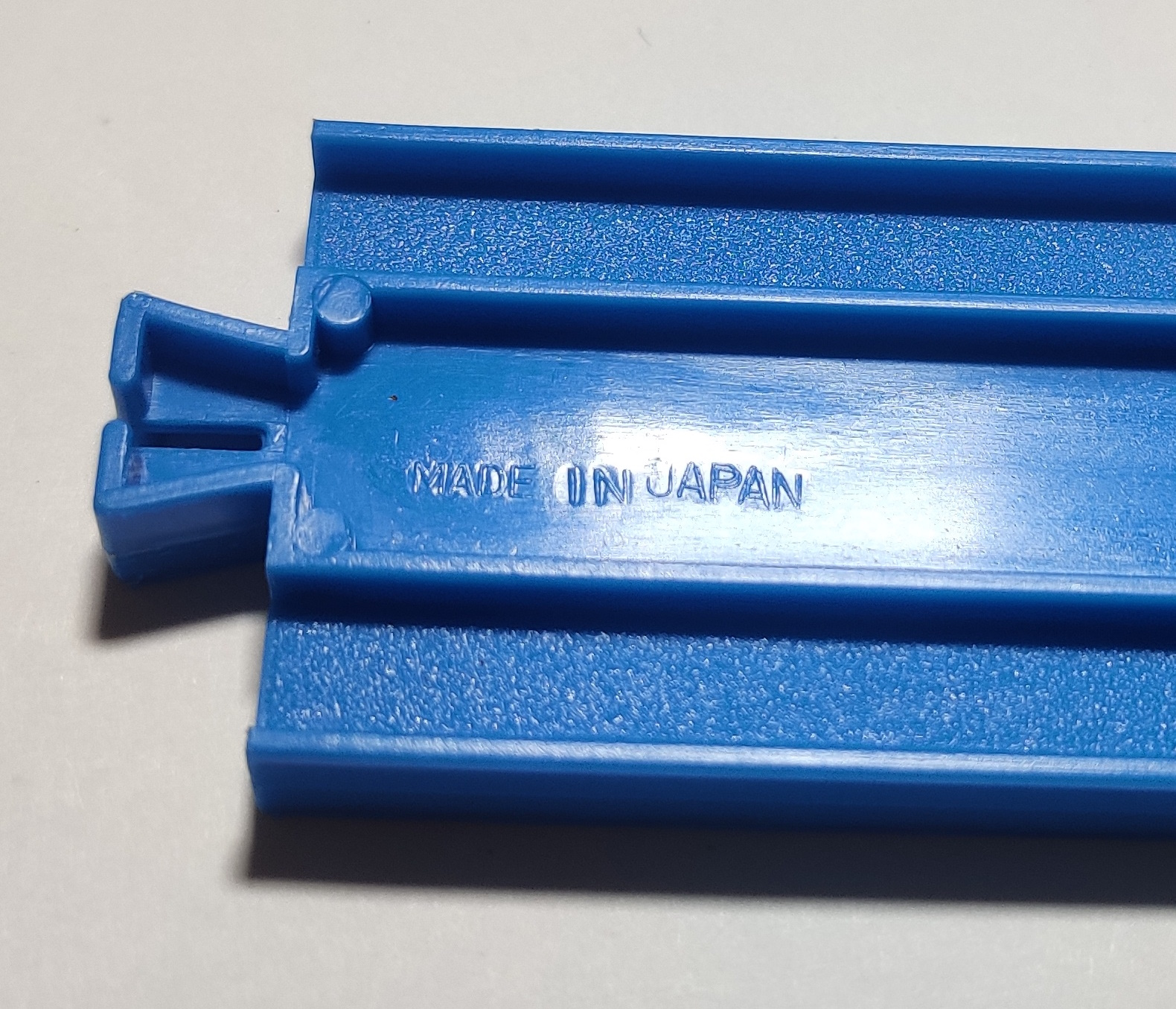
At some point during the use of this "rough" Japan mark the rails gained four support cylinders in the molding.
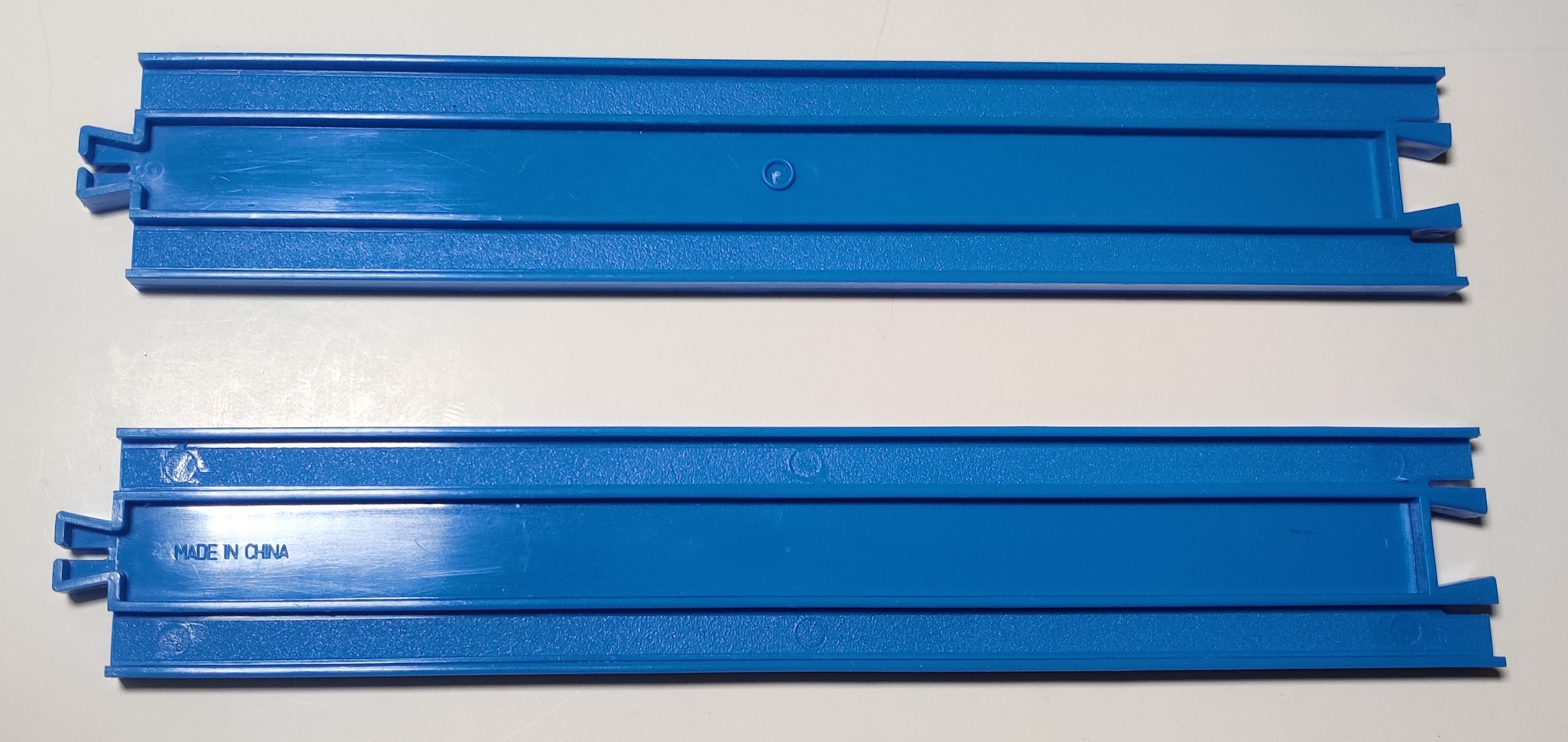
Oddly, some roughtop rails were produced in China in the later 1990s. Tomy began producing Tomica and some Plarail (often in Tomica crossover sets) in China, and the straight rail tooling used there was seemingly an old roughtop one.
Transition rails (1987-1992)



Around 1987 the straight rail was updated with the new treaded rail surface over the existing roughtop surface along with updated Japan marking. These molds were used for Japan-made rails until the last fresh Japan molding was produced in 1992.
Treaded rails (1989-)


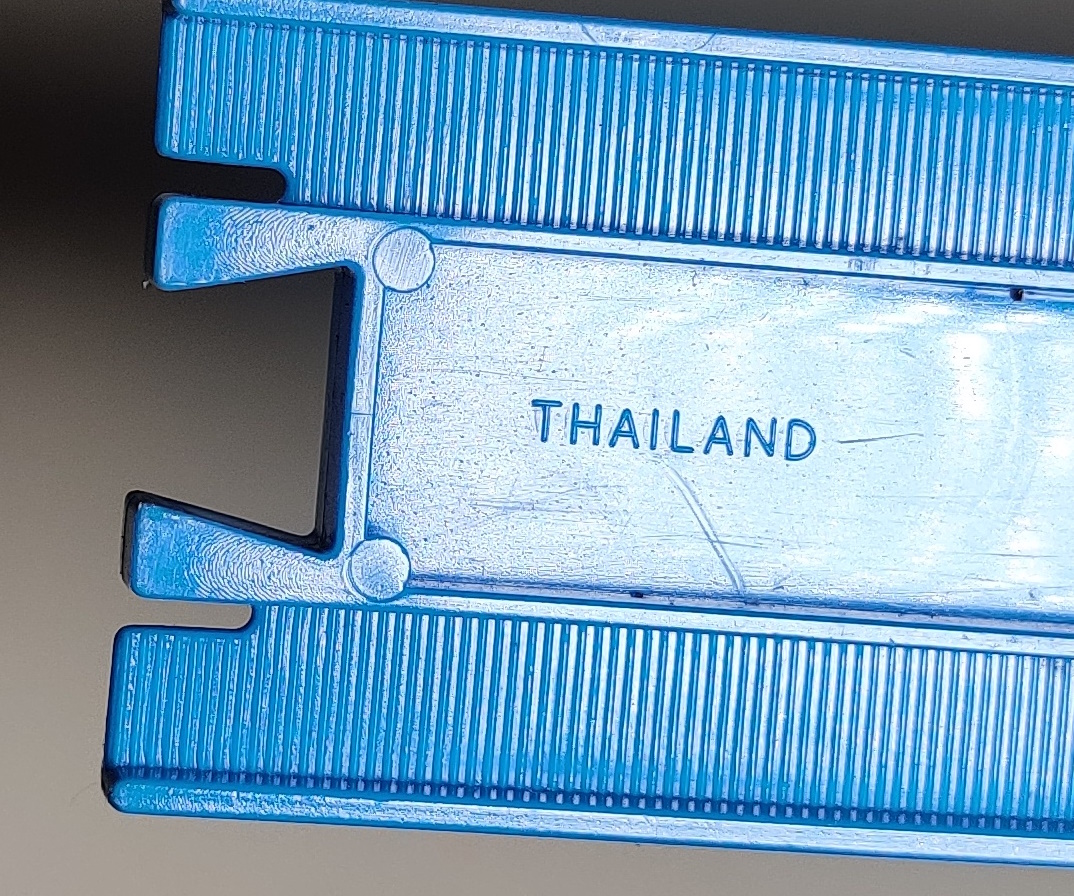
Tomy's new Thailand factory opened in 1987 and began producing rails with the new treaded surface rails when Plarail production began there in 1989. These early Thailand rails from 1989 have nice large Thailand and mold identification markings and eight round supports underneath.
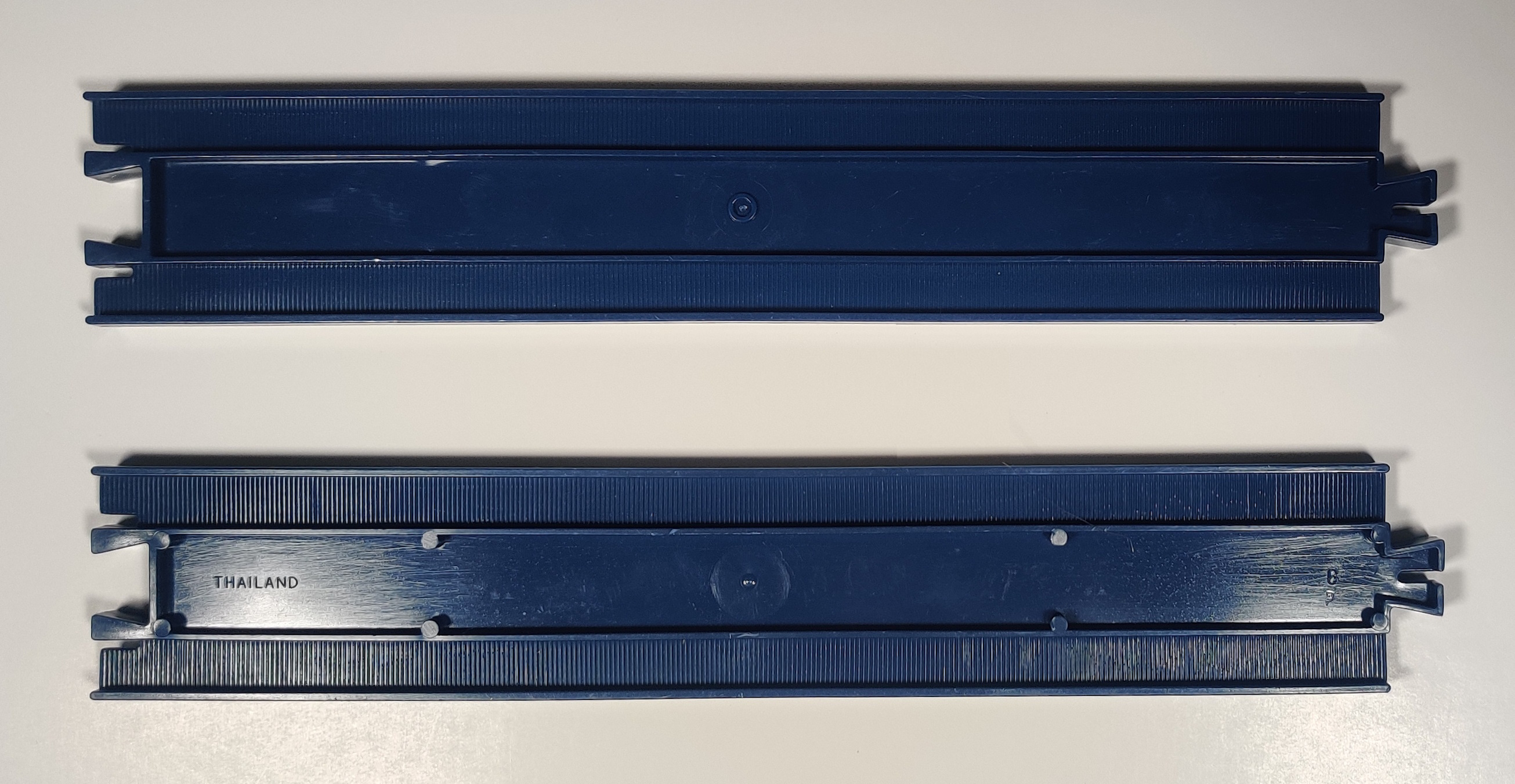
Actually, around 1988 Tomy began manufacturing rails in Thailand for Tomy Train and then around 1989 for Tomy Express in dark blue, seemingly in part to test out manufacturing Plarail in the new Thailand facility.


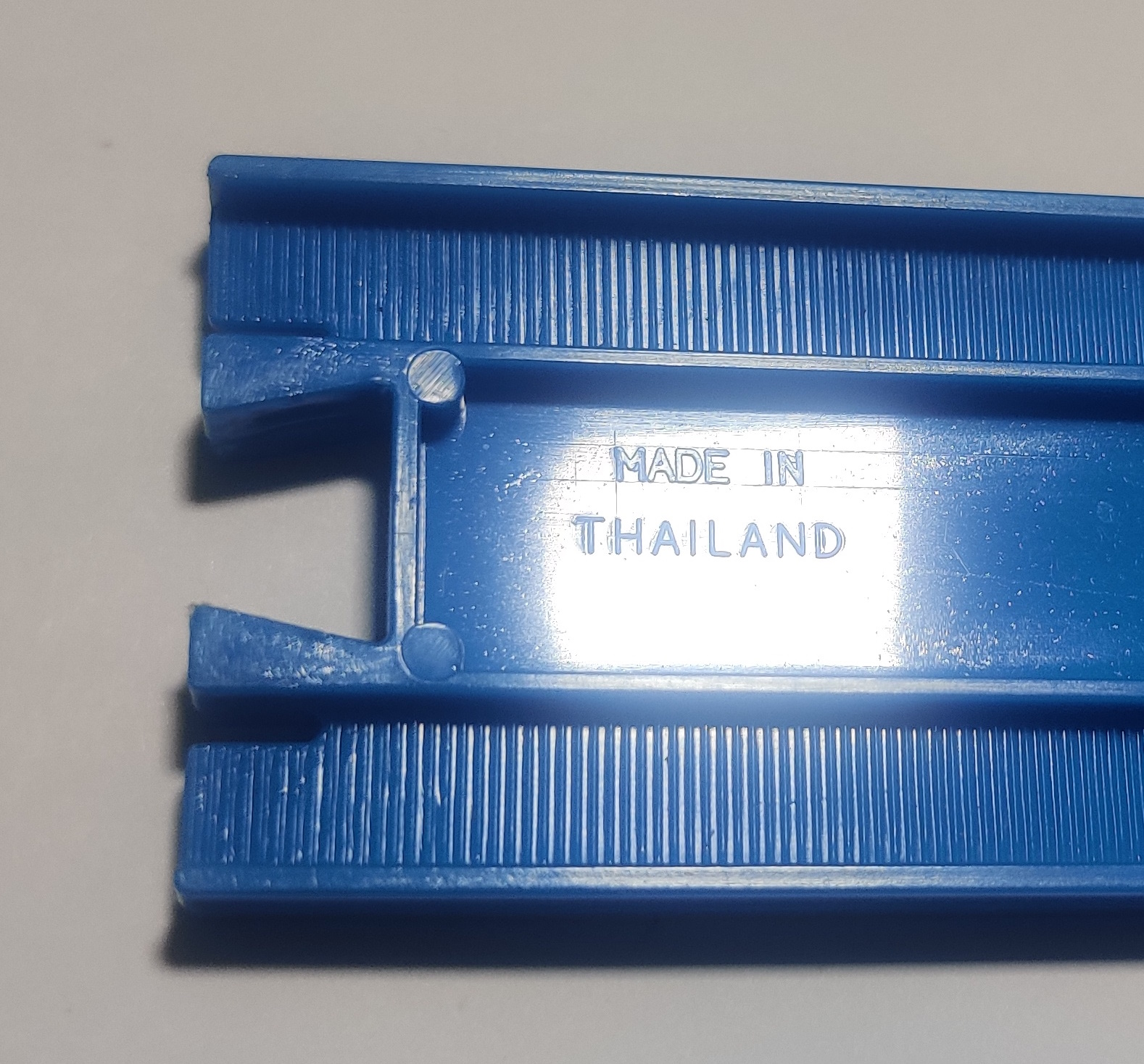
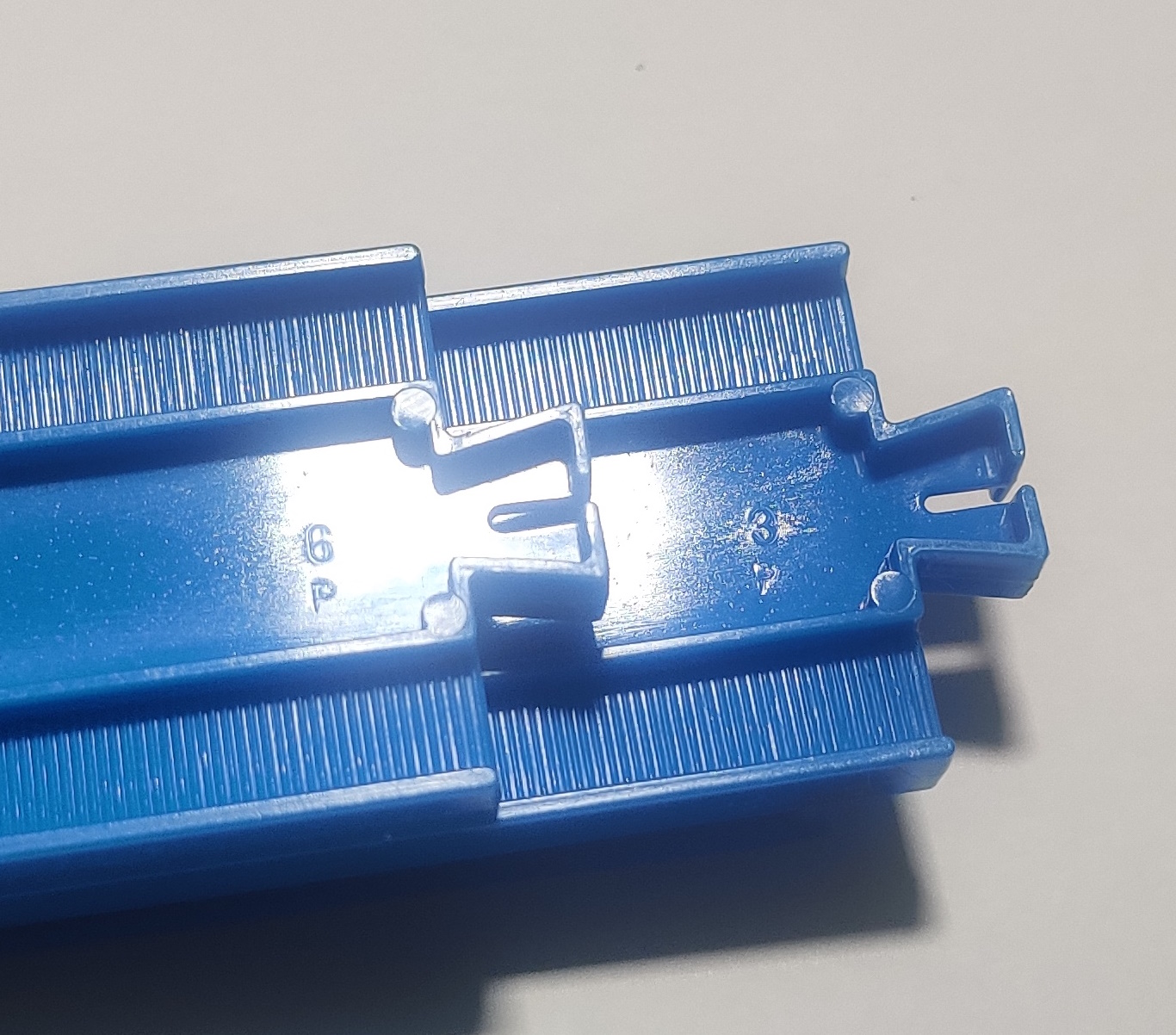
By 1993 the initial Thailand molds were updated with molding numbers and "MADE IN" text near the existing Thailand marker.
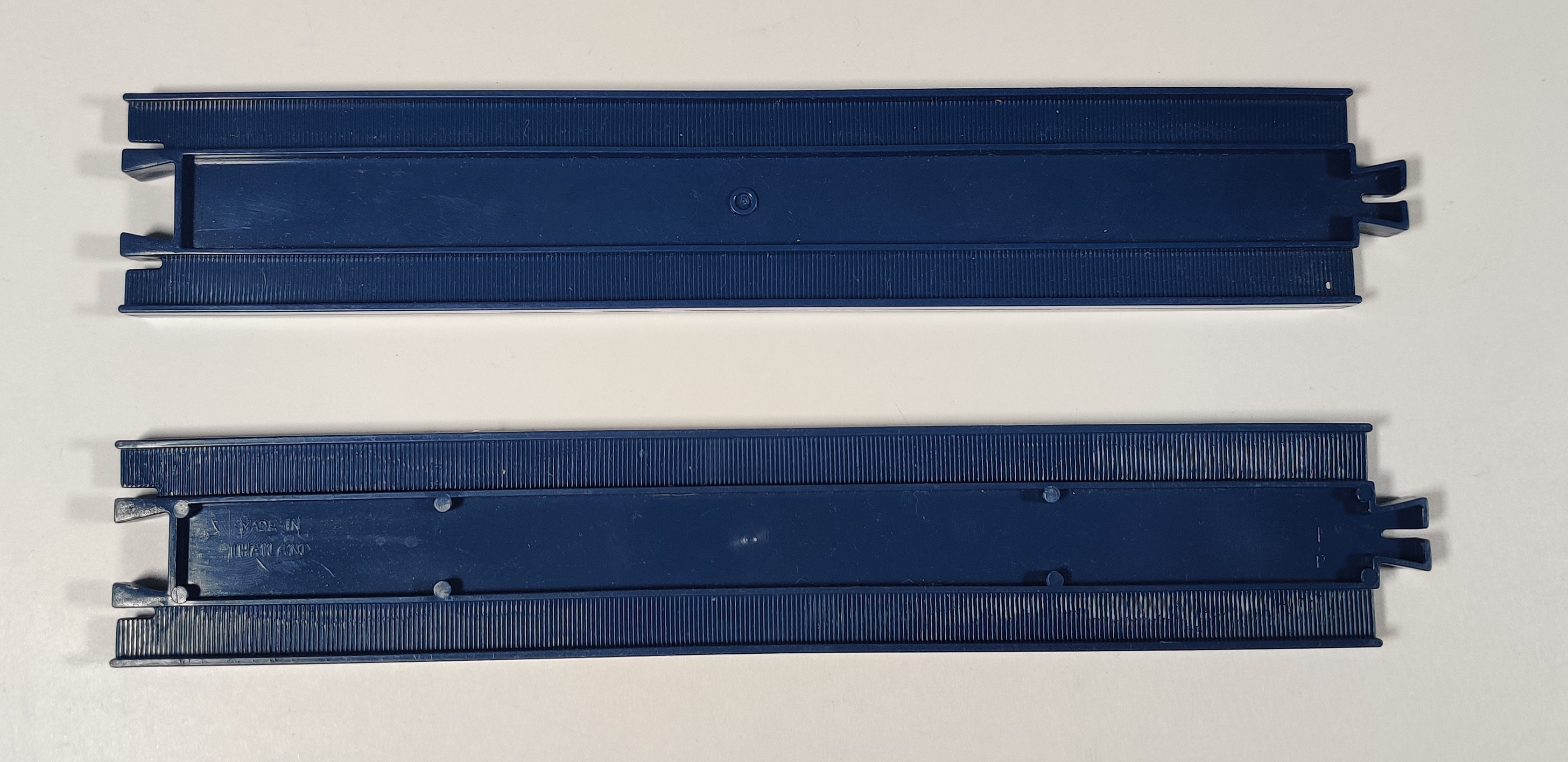
This updated tooling was also used for later Tomy Train production.


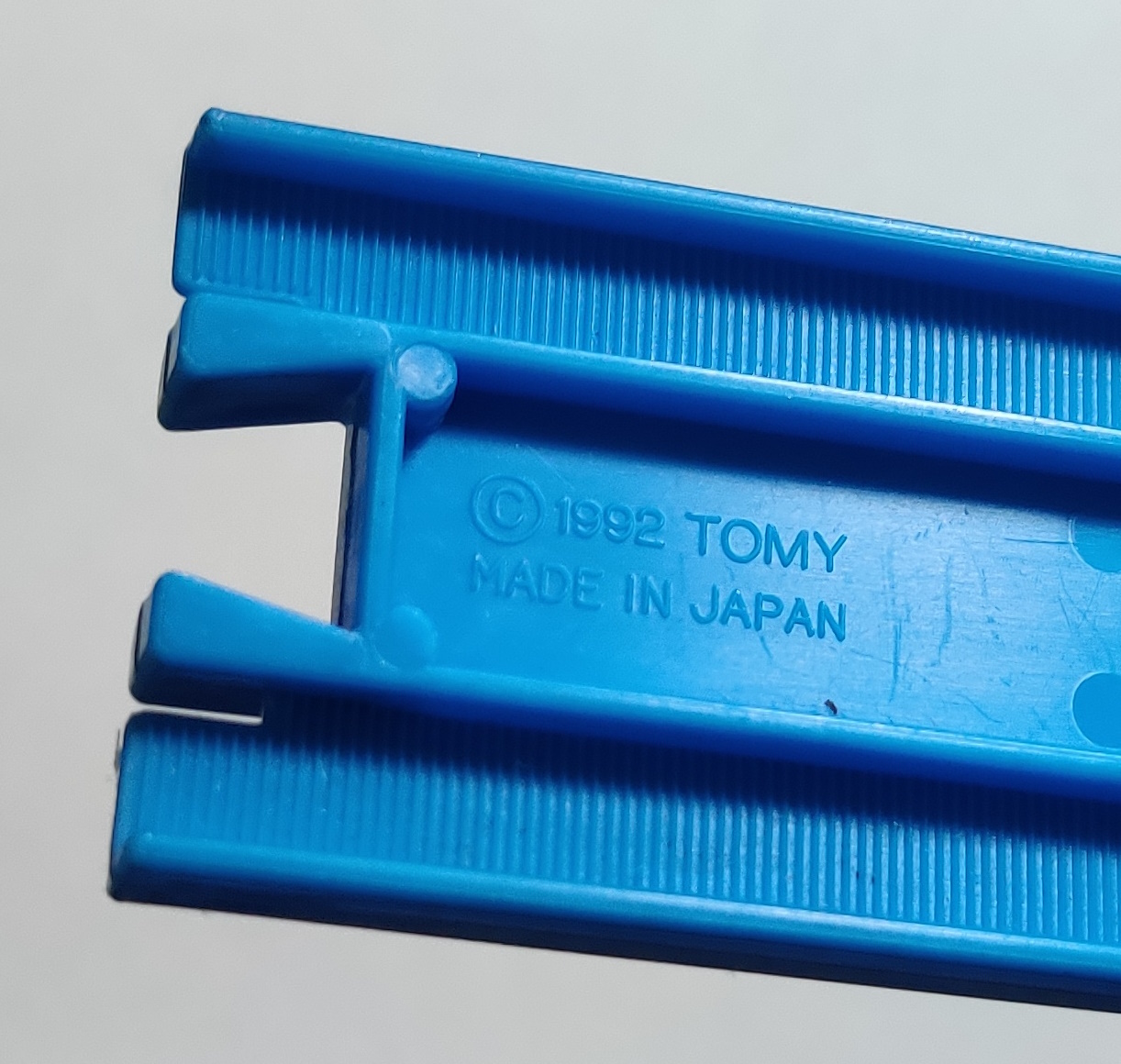
In 1992 some fresh molds were developed for use in Japan with the treaded surface and bear the text © 1992 TOMY MADE IN JAPAN. This mold has rougher center pips with eight cylindrical supports and molding dial markings in the bottom of the rails. This was the last new straight rail mold developed for Japanese production, as most Plarail manufacturing moved to Thailand by 1996.
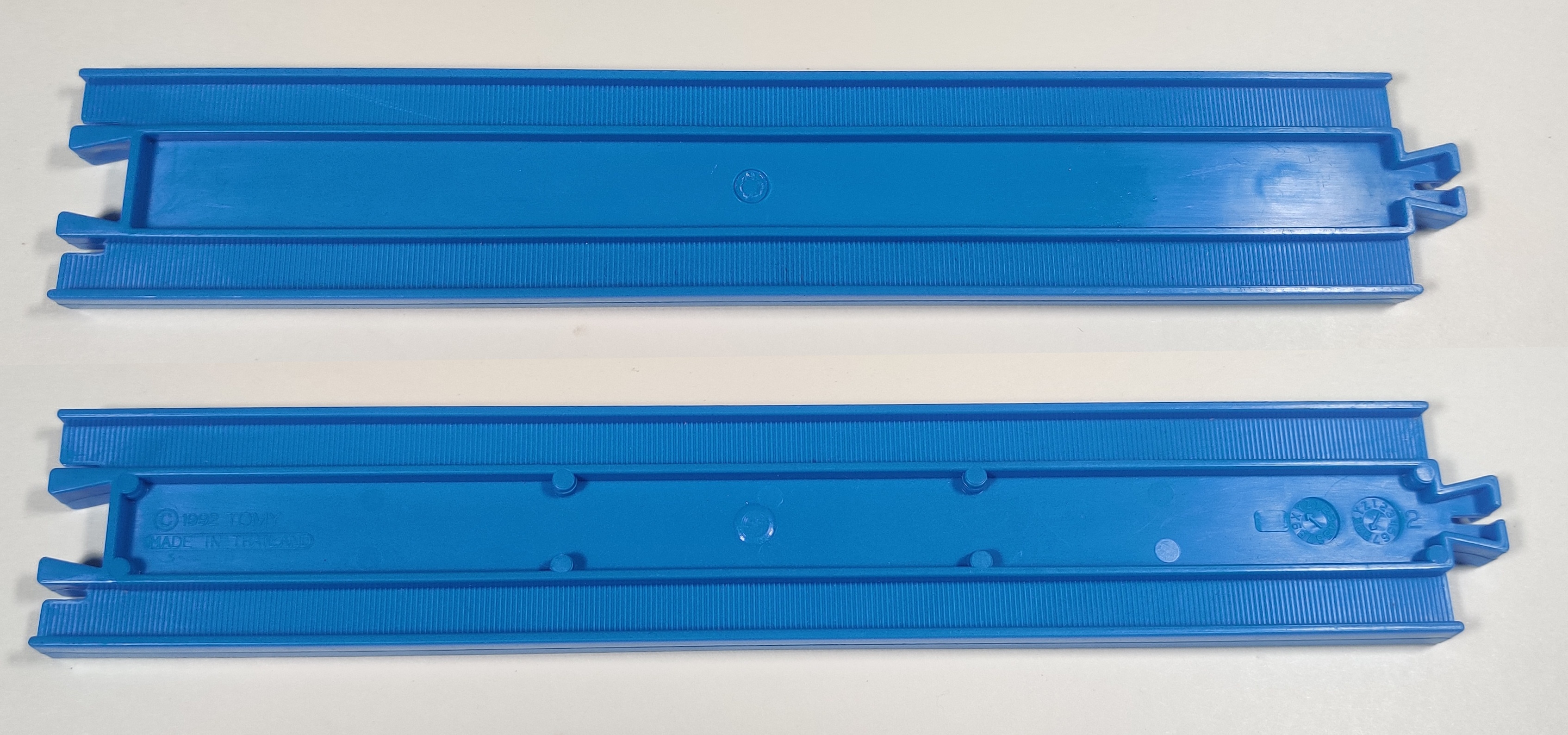
In the later 90s these 1992 Japan molds were moved to Thailand and updated to say made in Thailand with molding dials in the tooling. These molding dials can usually be decoded if you have an idea of possible years a set was manufactured. One of the dials represents the year and the other the month it was produced in, with workers rotating the dials every month and at the end of the year. This allows rails that are returned by a customer or that fail quality control to be traced to a specific period of manufacture. In this case, the double 8s probably mean this rail was manufactured in August 1998, but in cases where the rails from multiple sets across wide ranges of time are mixed it may take more time to determine exactly which dial indicates month or year on the specific tooling variant of the rail you are looking at...
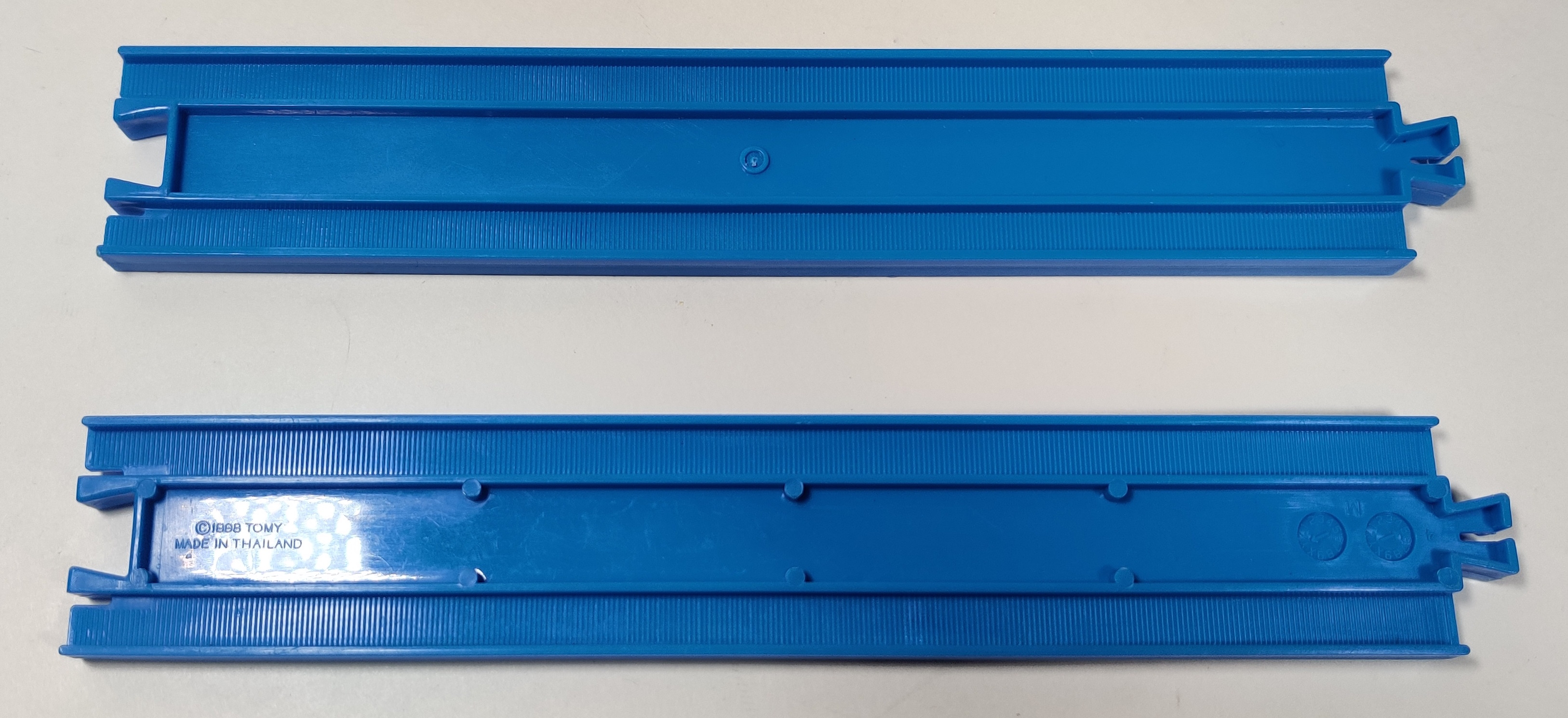
In 1998 new straight and curve rail toolings were manufactured for use in Thailand. These rails also have dial marks (in this case, Y = 11 = 2001 and 5 is May) and were used until the squared-off Tomy logo was added in the early 2000s.
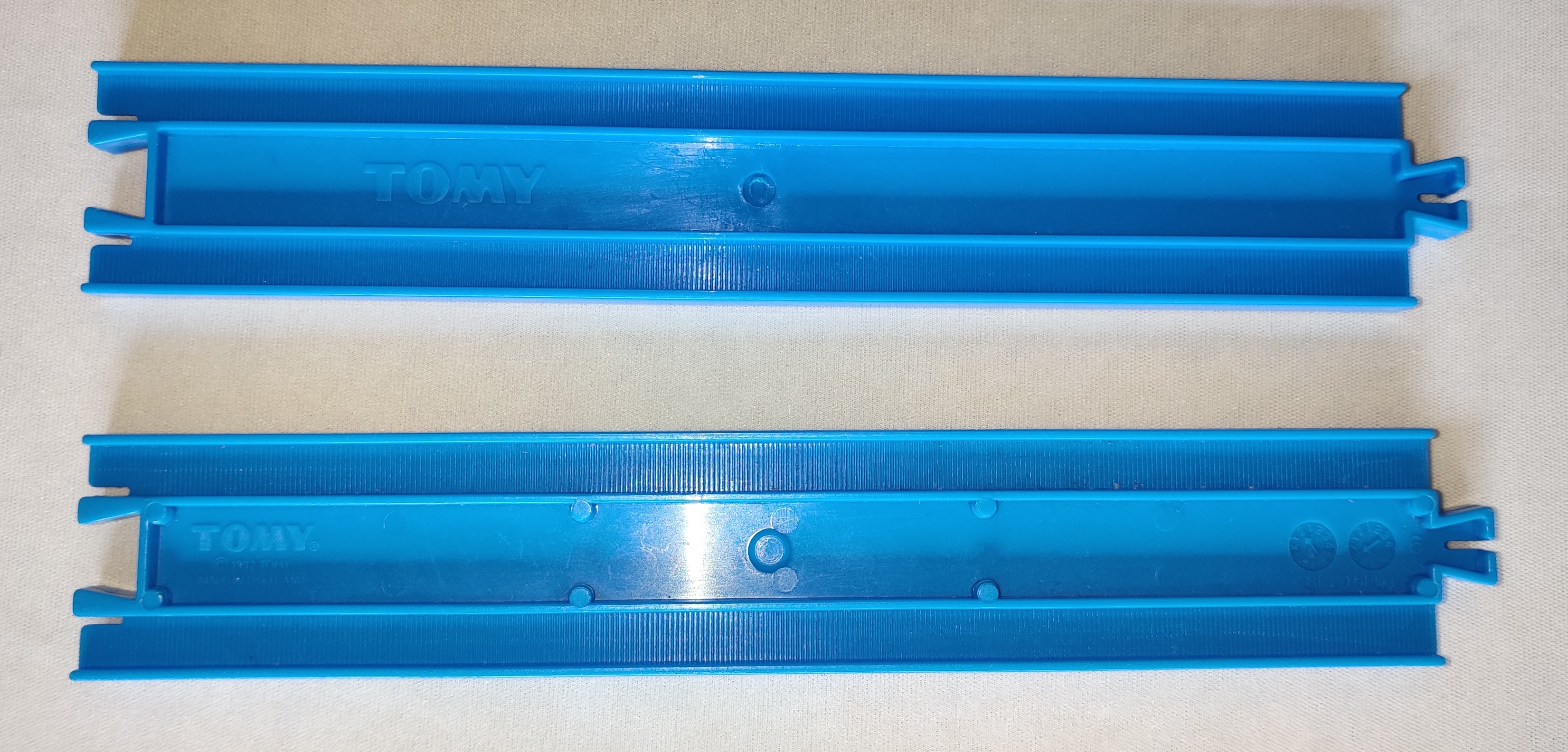
Around 2003 Tomy began adding their new logo to many of their Plarail toolings, included the 1992 dated set of toolings which had originally been used to produce rails in Japan before Plarail production moved to Thailand.
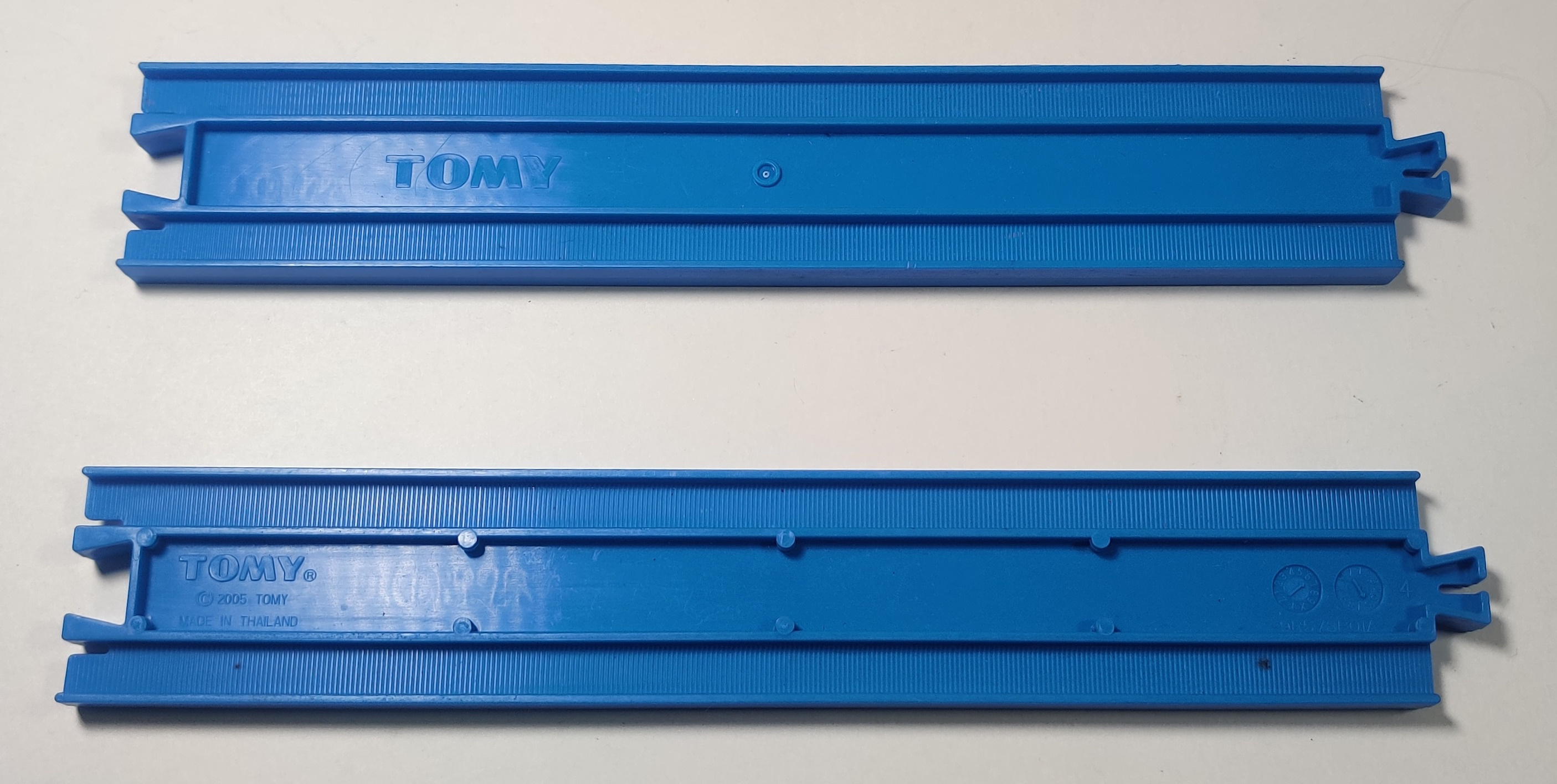
Around 2005 it appears that either the 1998 tooling was updated or a new mold with similar features was developed.
7480 Straight Rail (Tomica World) (1998)

Beginning in 1998 packs of four straight rails were sold in Tomica World packaging in Europe and North America as well as in sets. This straight rail was initially the 1992-dated toolings that were moved from Japan to Thailand in the mid 1990s when Tomy moved the rest of their Japanese Plarail production to Thailand.

Around 2001 Tomica World began using the 1998 dated Thailand molds.

Later export Thomas-series sets from the later 2000s used the updated 2005 straight rail tooling.
| R-02 Half Straight Rail --> |
R-07 2x Straight Rail (2003)
| <-- R-06 Slope Rail | R-08 Stop Rail --> |
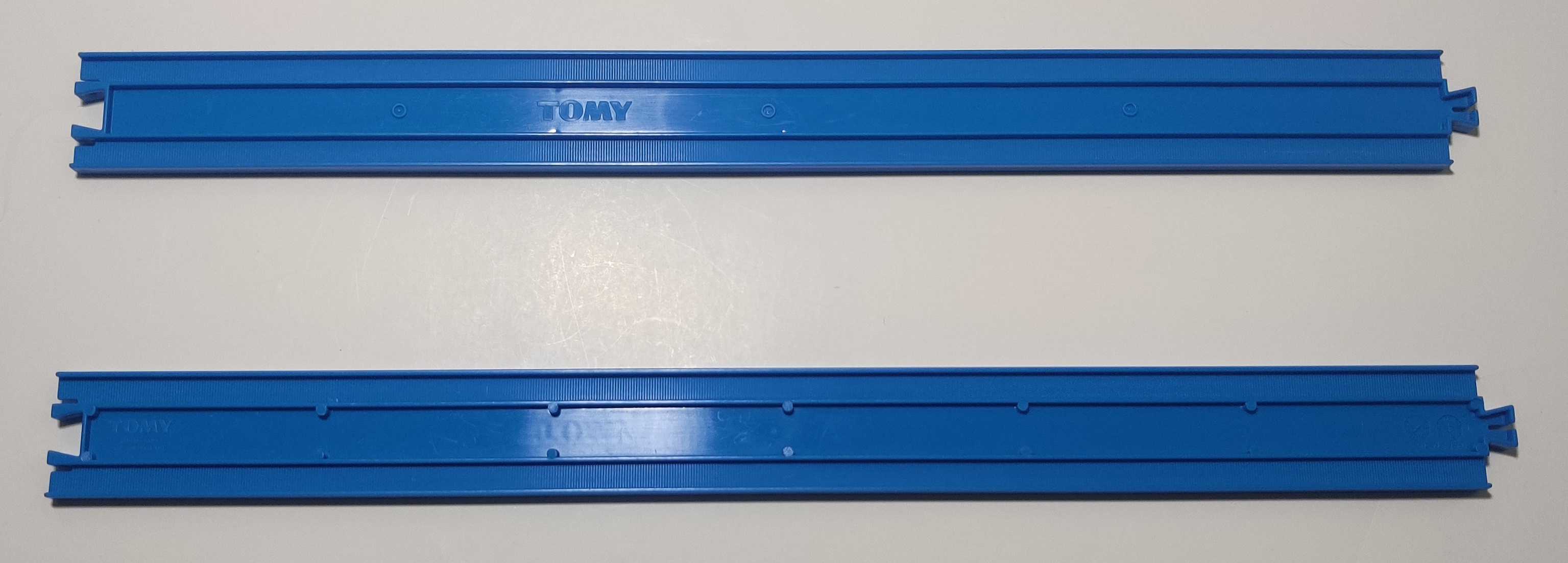
In 2003 Tomy released double-length straight rails as R-07 2x Straight Rail (2倍直線レール), filling in the place left by the discontinuation of the bridge rail a few years prior. These rails are handy if you want to use one of the old two-straight-long big iron bridges without needing a support in the middle, although I think with time or lots of trains running over them they will start to droop.
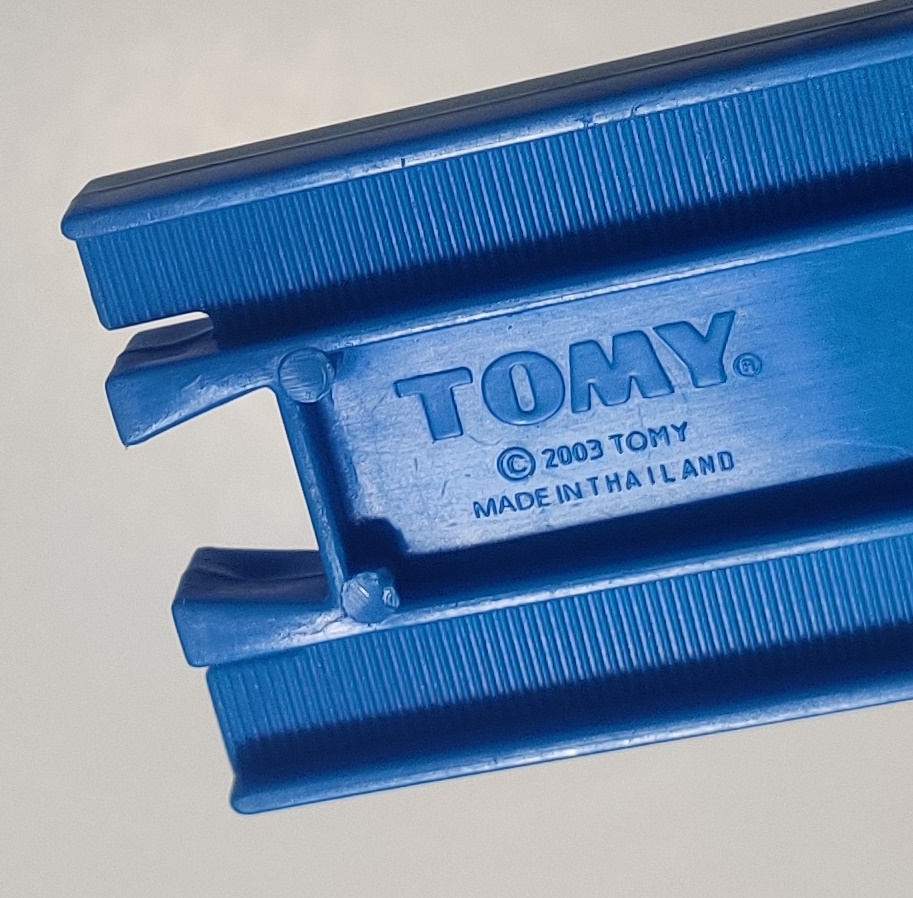
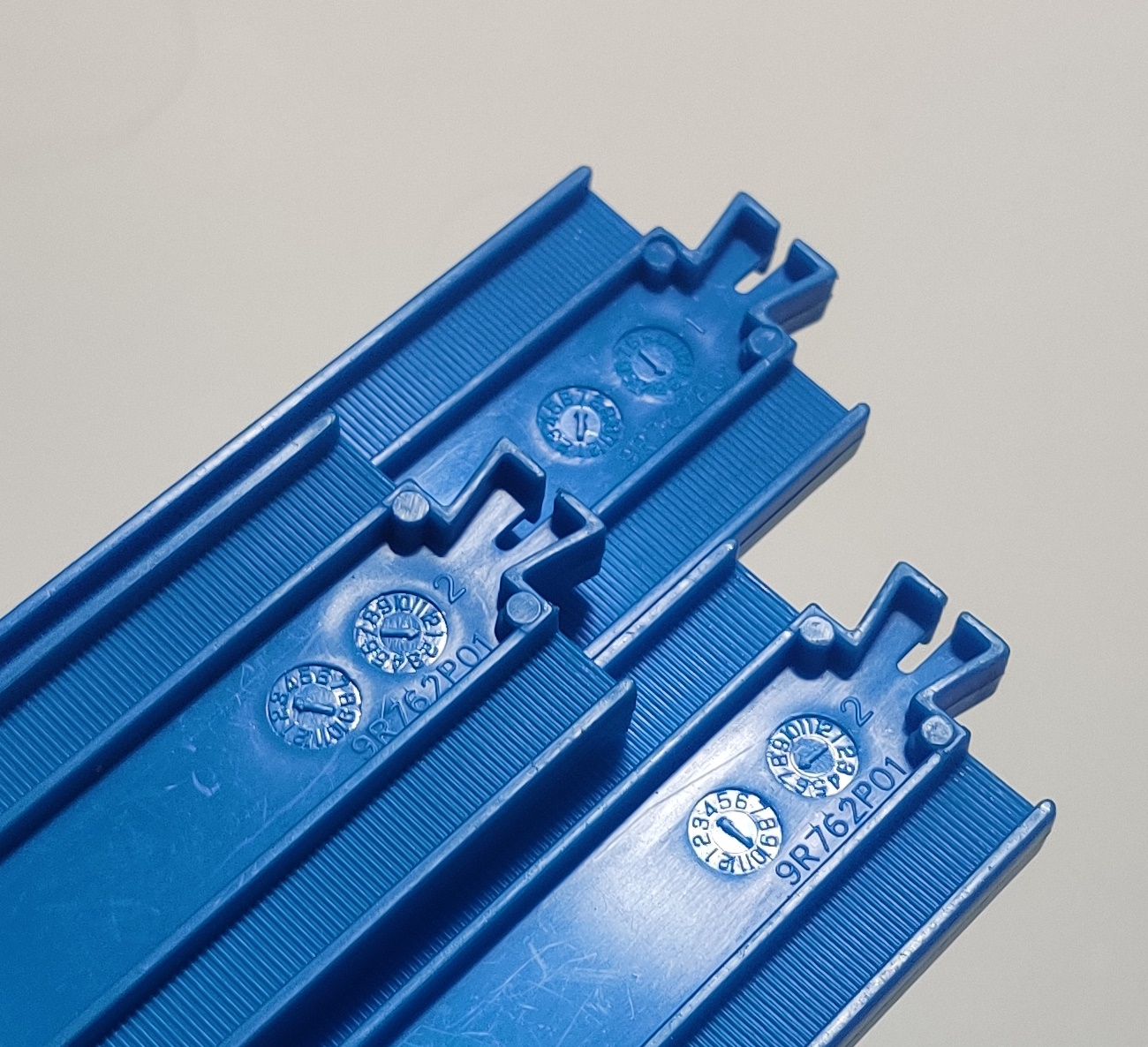
The tooling is marked 2003 Tomy at one end, with production dials in the other end.